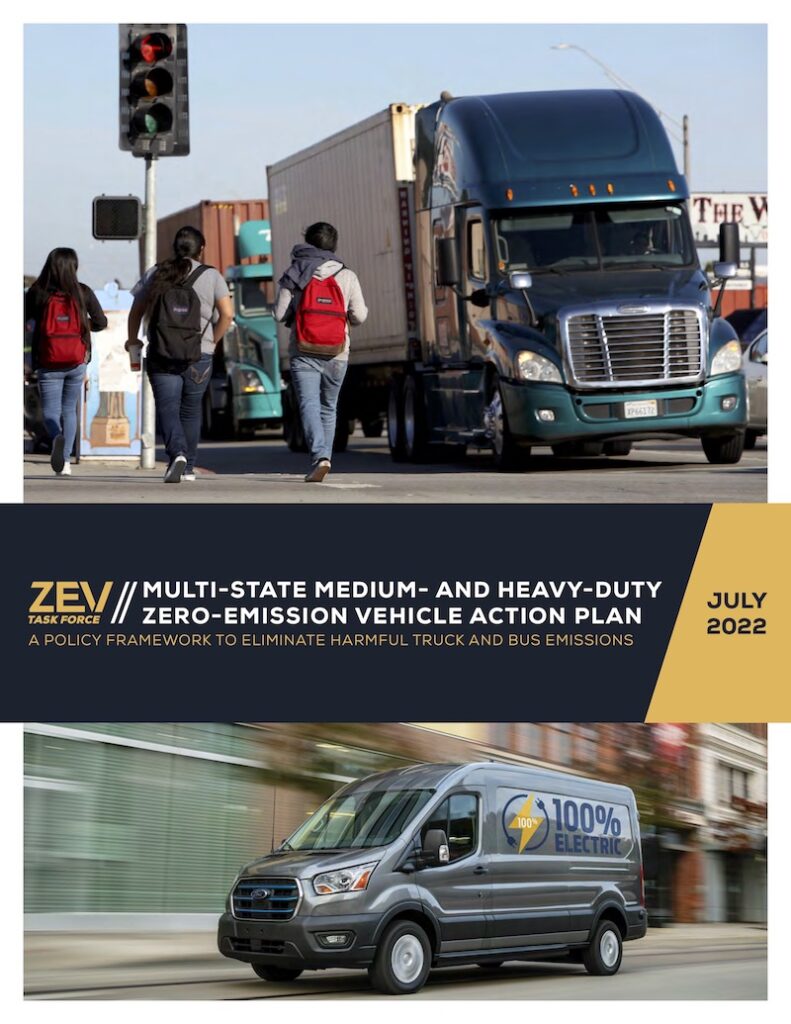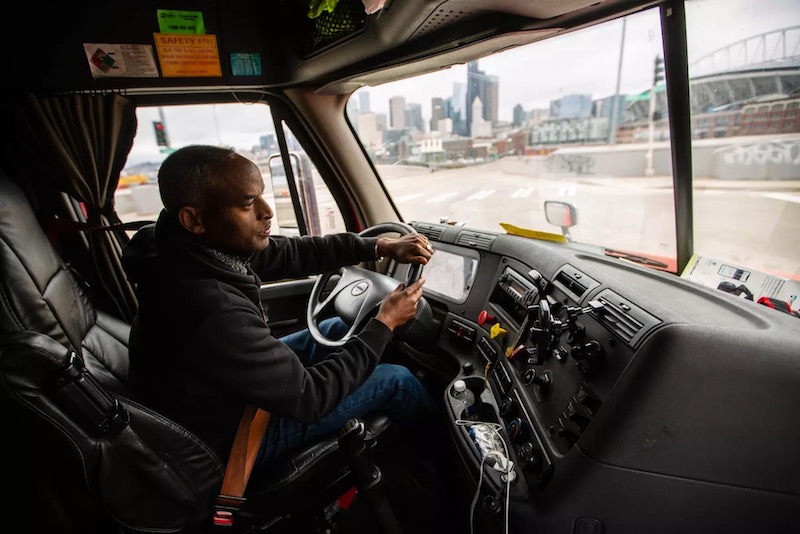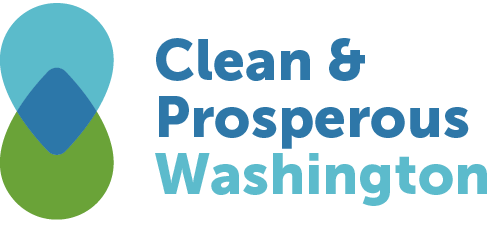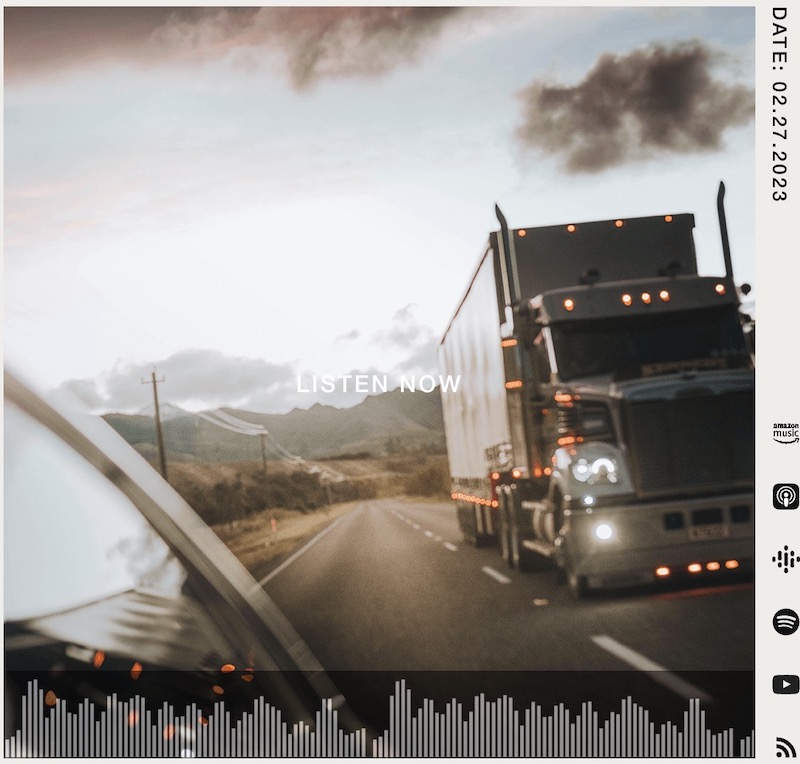The road ahead for clean trucks
Trucks and buses represent just 10% of vehicles on Washington’s roads and highways, but are responsible for 30% of the state’s on-road GHG emissions, and disproportionately contribute to low air quality in low-income and historically disadvantaged neighborhoods.
 Recognizing the benefits of decarbonizing truck and bus fleets, Washington – along with 16 other states, the “other” Washington (D.C.) and the province of Quebec – signed on to the Multi-State Medium- and Heavy-Duty Zero-Emission Vehicle Action Plan, committing to strive for at least 30% of new electric medium- and heavy-duty (MHD) zero-emission vehicle (ZEV) sales by 2030, and 100% of MHD ZEV sales by 2050. The Action Plan includes more than 65 strategies and recommendations for policymakers to consider to accelerate electric truck and bus adoption.
Recognizing the benefits of decarbonizing truck and bus fleets, Washington – along with 16 other states, the “other” Washington (D.C.) and the province of Quebec – signed on to the Multi-State Medium- and Heavy-Duty Zero-Emission Vehicle Action Plan, committing to strive for at least 30% of new electric medium- and heavy-duty (MHD) zero-emission vehicle (ZEV) sales by 2030, and 100% of MHD ZEV sales by 2050. The Action Plan includes more than 65 strategies and recommendations for policymakers to consider to accelerate electric truck and bus adoption.
Among the recommendations in the report:
“Providing purchase incentives to reduce or eliminate the purchase price differential for MHD ZEVs and the cost of charging and fueling infrastructure are among the most important actions that states can take to accelerate electric truck and bus adoption in this early market. This is particularly true for smaller fleets, independent owner-operators, and minority-owned fleets in low- and middle-income communities that may not have sufficient capital or access to affordable financing sources to front load the cost of higher priced ZEVs and charging/fueling infrastructure…. The most effective incentive programs are point-of-sale programs that provide ‘cash-on-the-hood’ at the time of purchase.”
That’s why we’re glad the governor and leaders in the Washington state legislature budgeted significant investments in truck decarbonization programs, including a new medium- and heavy-duty zero-emission vehicle purchase and infrastructure incentive program. The state also has access to federal funds from the Inflation Reduction Act and the Bipartisan Infrastructure Law (which includes a $7.5 billion Charging and Fueling Infrastructure grant program to support EV charging infrastructure).
So now the question everyone is asking is, “When do these funds begin to flow?”
This is one of the questions that was asked during the recent Pacific Northwest Economic Region panel discussion on Washington State’s MHD ZEV Policy & Funding Landscape. That panel featured Anna Lising (Senior Climate Advisor, Office of the Governor), Leah Missik (Senior Washington State Transportation Policy Manager, Climate Solutions), and our executive director, Michael Mann. Watch the recording here:
Though there’s urgency in service of the climate and the economy, it’s important that investments are right, not rushed – invested wisely for greatest ROI.
The Washington State Legislature will look to its bipartisan, bicameral Joint Transportation Committee for analyses of prospective programs, policies and investments. Their report is due in January. As well, there will be opportunities for public comment as the Departments of Ecology, Commerce, Transportation, and others develop plans.
Anna Lising noted, “We are working with urgency, [but] acknowledge that we’re still government. We have to work under certain processes. There’s a lot of restrictions on how we can do things. And so just please have some patience and bear with us. I promise that we are working as quickly as possible. We have a lot of very dedicated public servants who are underpaid and overworked, but are working round the clock.”
We aim to help. We’ll offer advice to decision makers, providing input from multiple perspectives.
Also helpful as fact-based input is this hot-off-the-press report from the International Council on Clean Transportation. Did you know?
- China accounts for ~92% of the global HD ZEV market. (We have some catching up to do…)
- Battery-electric long-haul trucks are expected to record the lowest total-cost-of-ownership (TCO) by 2030 in most states.
- Setting targets for charging station deployment along key National Highway Freight Network corridors can accommodate up to 85% of long-haul charging needs by 2030.
One key long-haul corridor is Interstate 5, from San Diego to British Columbia. The West Coast Clean Transit Corridor Initiative is a collaborative effort among 16 utilities to support the development of electric vehicle charging facilities along I-5, for medium- and heavy-duty freight haulers and delivery trucks.
 Short-haul drayage truckers warrant priority attention with any MHD ZEV program, for reasons detailed in this 5-minute report on KNKX.
Short-haul drayage truckers warrant priority attention with any MHD ZEV program, for reasons detailed in this 5-minute report on KNKX.
And while you have your headphones on, listen to this excellent podcast from Climate Now: The road to decarbonized trucking (Fast forward to 10:00 for the main story.) You’ll learn why thousands of electric buses are being deployed in the city of Santiago, Chile, and why new business models, including trucking-as-a-service, may put the transition to MHD ZEVs in the fast lane.
Trucks, buses, and delivery vans keep our economy moving. And they can move our economy to a cleaner place. Among the pioneers leading the way are the first graduates of the Breaking Barriers Collaborative Fleet Decarbonization Accelerator. These fleet operators from businesses both large and small completed a 9-week program that helped them create an actionable fleet decarbonization plan. To celebrate their program completion, join us in Portland on June 1, featuring guest speaker Ingrid Fish of the City of Portland, or Seattle on June 8, with Washington State Senator Joe Nguyễn. Email accelerators@breakingbarrierscollaborative.org for more information, or click HERE to register.


